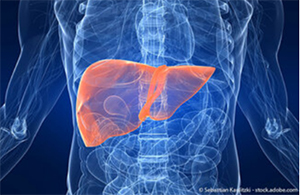World’s First Right Liver Lobe Resection Performed Using da Vinci Single Port Robot

New surgical robot used for the first time at the Medical Center - University of Freiburg to remove the right side of a patient's liver via a single incision in the abdomen. Less pain and faster recovery.
In a world first, the right side of a patient's liver was removed using a single minimally invasive incision at the Department of General and Visceral Surgery at the Medical Center - University of Freiburg. This was achieved using a new surgical robot, which allows all instruments to be inserted into the abdominal cavity through a single incision. Previously, this procedure required open surgery or a minimally invasive procedure with multiple incisions.
The procedure was performed by a team led by Senior Physician Dr. Philipp Holzner and Senior Physician Dr. Christopher Berlin from the Department of General and Visceral Surgery at the Medical Center - University of Freiburg. The innovative technique allows for a particularly gentle operation with potentially faster recovery and improved quality of life for patients after the procedure.
“With this new technology, we can perform even major operations such as partial liver removal in a particularly gentle and individualized manner – tailored precisely to the anatomy of each individual patient,” says Prof. Dr. Stefan Fichtner-Feigl, Medical Director of the Department of General and Visceral Surgery at the Medical Center - University of Freiburg.
Gentle procedure with only one incision
In most clinics this major liver surgery, in which around 65 percent of the organ is removed, is still performed using open surgery, which involves a large incision in the abdomen. At the Medical Center - University of Freiburg, the removal is already performed robotically in many cases, previously using a multi-arm system. The single-arm da Vinci “Single Port” system now in use has only been available in Freiburg since this year. It was developed specifically for procedures where conventional systems reach their limits, such as operations in confined anatomical spaces.
Surgical instruments and a camera can be inserted into the body through a single access point. This technique enables a minimally invasive operation with potentially less postoperative pain, a shorter hospital stay, and improved surgical accessibility to the affected tissue.
The operation was necessary for a young patient who had been diagnosed with a benign liver tumor. As this was growing in size and there was a risk of it becoming malignant, the doctors treating him recommended the preventive removal of the right half of his liver. Thanks to this particularly gentle procedure, the patient was able to leave the hospital just six days after surgery.
Back